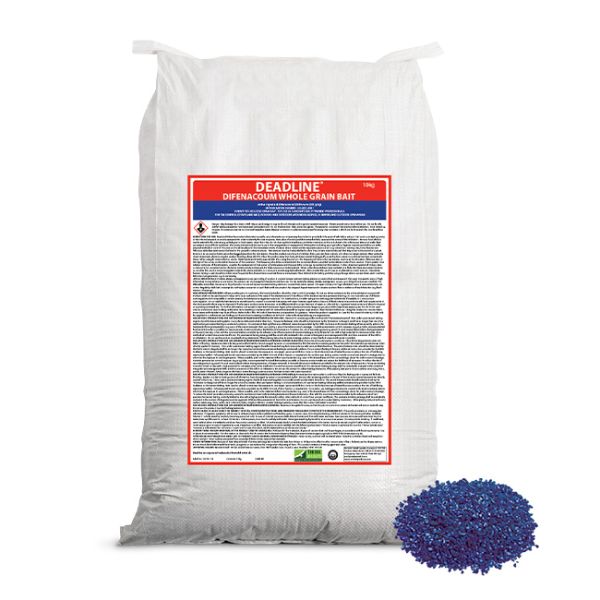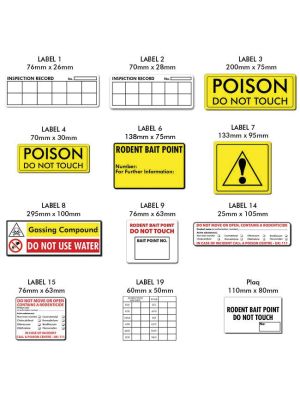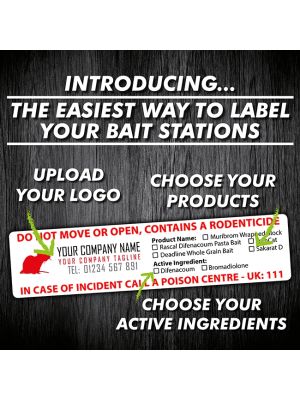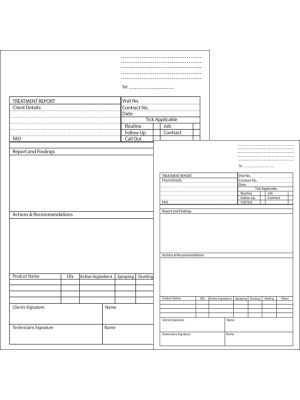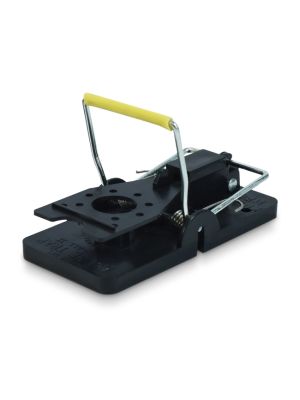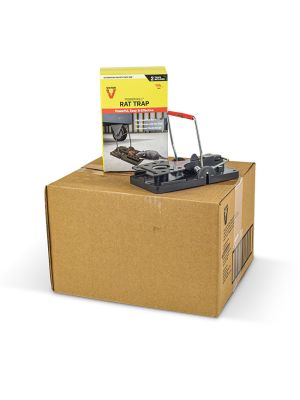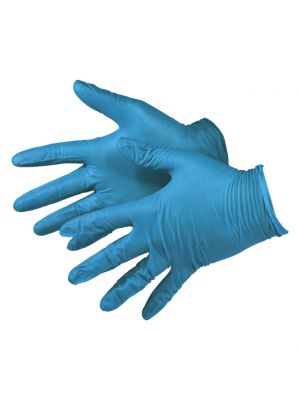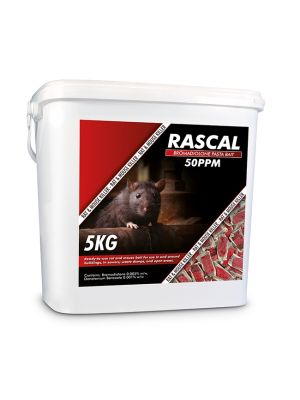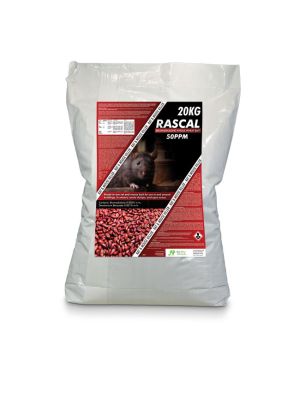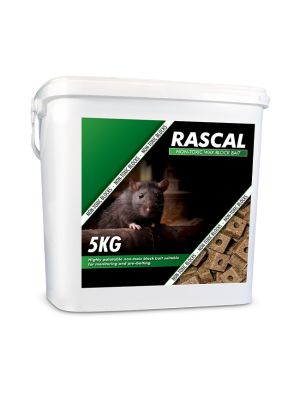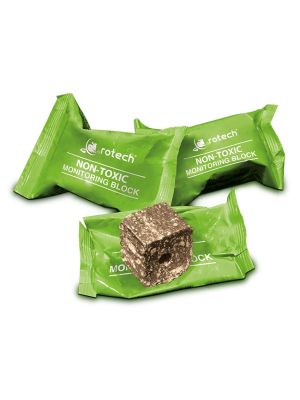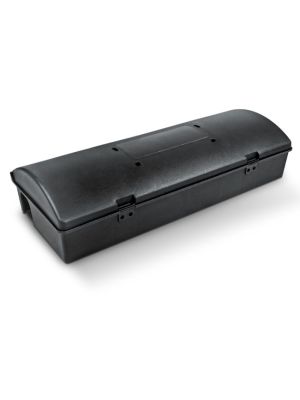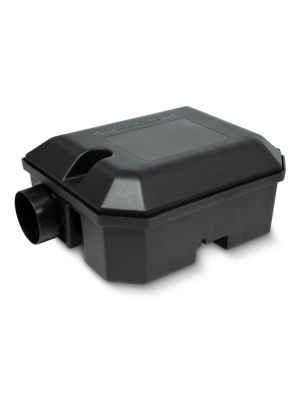Deadline Bromadiolone W/W 10kg

This product requires certification to purchase.
If you have an approved account, please sign-in to purchase this product.
If you hold certification but haven't got an account yet please contact us by one of the methods below:
Live Chat | 01702 525 202 | sales@1env.co.uk
*Please note, if you do not have qualifications in pest control, we will not sell this product to you*
- Deadline Bromadiolone is a highly attractive and palatable whole wheat rodenticide.
- Suitable for use indoors and outdoors (around buildings), waste dumps and open areas.
- Perfect for use in our range of bait stations, to help keep secure place into a bait tray.
- Deadline Bromadiolone is available in a 10kg sack.
- Deadline rat and mouse bait is a professional grade product.
Active Ingredient: 0.005% Bromadiolone.
This product will be due back in stock, week commencing 19/02/24. Have you tried Rascal Bromadiolone Whole Wheat 10kg?
UK Authorisation Number: UK-2014-0827
APPLICATION DETAILS
For Rats (Rattus norvegicus): Secure up to 250g of product in covered tamper resistant baiting stations or covered bait points spaced 10m apart (5m apart in areas of high infestation) in areas where rats are active. The product can also be applied directly into rat burrows.
For rat control in sewers (Rattus norvegicus): secure up to 300g of product per manhole.
For Mice (Mus musculus): Secure up to 50g of product in covered tamper resistant baiting stations or covered bait points spaced 10m apart (5m apart in high infestation areas) in areas where mice are active.
Regularly check bait consumption and replace consumed or spoilt bait until consumption has stopped. Repeat treatment in situations where there is evidence of new infestation (e.g. fresh tracks or droppings).
USE-SPECIFIC INSTRUCTIONS FOR USE AND RISK MITIGATION MEASURES (INDOOR USE): Remove the remaining product at the end of the treatment period. Sites under a permanent baiting regime should be inspected regularly in accordance with product label directions. The period between visits should be determined by the Technician in charge but will be no longer than every four weeks when permanent baiting is conducted outdoors. For permanent baiting follow any additional instructions provided by the CRRU Guidance on Permanent Baiting. Where possible, prior to the treatment inform any bystanders (e.g. users of the treated area and their surroundings) about the rodent control campaign. Consider preventative control measures (e.g. plug holes, remove potential food and drink as far as possible) to improve product intake and reduce the likelihood of reinvasion. To reduce the risk of secondary poisoning, search for and remove dead rodents during treatment at frequent intervals, in line with the recommendations provided by the relevant code of best practice. Permanent baiting is strictly limited to sites with a high potential for reinvasion when other methods of control have proven insufficient. The permanent baiting strategy shall be periodically reviewed in the context of integrated pest management (IPM) and the assessment of the risk for re-infestation. Do not use the product in pulsed baiting treatments. When placing baits close to water drainage systems, ensure that bait contact with water is avoided.
USE-SPECIFIC INSTRUCTIONS FOR USE AND RISK MITIGATION MEASURES (OUTDOOR AROUND BUILDINGS): Protect bait from atmospheric conditions. Place the baiting points in areas not liable to flooding. Replace any bait in baiting points which bait has been damaged by water or contaminated by dirt. Remove the remaining product at the end of the treatment period (except when directly applied to burrows). Sites under a permanent baiting regime should be inspected regularly in accordance with product label directions. The period between visits should be determined by the Technician in charge but will be no longer than every four weeks when permanent baiting is conducted outdoors. For permanent baiting follow any additional instructions provided by the CRRU Guidance on Permanent Baiting. Baits must be placed to minimise the exposure to non-target species and children. Cover or block the entrances of baited burrows to reduce the risks of bait being rejected and spilled. Follow any additional instructions provided by the CRRU UK Code of Best Practice (or equivalent). For outdoor use, baiting points must be covered and placed in strategic sites to minimise the exposure to non-target species. Where possible, prior to the treatment inform any bystanders (e.g. users of the treated area and their surroundings) about the rodent control campaign. Consider preventative control measures (e.g. plug holes, remove potential food and drink as far as possible) to improve product intake and reduce the likelihood of reinvasion. To reduce the risk of
secondary poisoning, search for and remove dead rodents during treatment at frequent intervals, in line with the recommendations provided by the relevant code of best practice. Permanent baiting is strictly limited to sites with a high potential for reinvasion when other methods of control have proven insufficient. The permanent baiting strategy shall be periodically reviewed in the context of integrated pest management (IPM) and the assessment of the risk for re-infestation. Do not use the product in pulsed baiting treatments. When placing bait points close to surface waters (e.g. rivers, ponds, water channels, dykes, irrigation ditches) or water drainage systems, ensure that bait contact with water is avoided.
USE-SPECIFIC INSTRUCTIONS FOR USE AND RISK MITIGATION MEASURES (OUTDOOR OPEN AREAS): Protect bait from atmospheric conditions. Place the baiting points in areas not liable to flooding. Replace any bait in baiting points which bait has been damaged by water or contaminated by dirt. Remove the remaining product at the end of the treatment period (except when directly applied to burrows). Sites under a permanent baiting regime should be inspected regularly in accordance with product label directions. The period between visits should be determined by the Technician in charge but will be no longer than every four weeks when permanent baiting is conducted outdoors. For permanent baiting follow any additional instructions provided by the CRRU Guidance on Permanent Baiting. Baits must be placed to minimise the exposure to non-target species and children. Cover or block the entrances of baited burrows to reduce the risks of bait being rejected and spilled. Follow any additional instructions provided by the CRRU UK Code of Best Practice (or equivalent). For outdoor use, baiting points must be covered and placed in strategic sites to minimise the exposure to non-target species. Where possible, prior to the treatment inform any bystanders (e.g. users of the treated area and their surroundings) about the rodent control campaign. To reduce the risk of secondary poisoning, search for and remove dead rodents during treatment at frequent intervals, in line with the recommendations provided by the relevant code of best practice. Permanent baiting is strictly limited to sites with a high potential for reinvasion when other methods of control have proven insufficient. The permanent baiting strategy shall be periodically reviewed in the context of integrated pest management (IPM) and the assessment of the risk for re-infestation. Do not use the product in pulsed baiting treatments. When placing bait points close to surface waters (e.g. rivers, ponds, water channels, dykes, irrigation ditches) or water drainage systems, ensure that bait contact with water is avoided.
USE-SPECIFIC INSTRUCTIONS FOR USE AND RISK MITIGATION MEASURES (SEWERS): Baits must be applied in a way so that they do not come into contact with water and are not washed away. Do not use the product in pulsed baiting treatments.
A CRRU Certification is required for all professional pest controllers to purchase rat and mouse poisons.
To be used only by professional users holding certification demonstrating compliance with UK rodenticide stewardship regime requirements.
Read the label before use. Using this product in a manner that is inconsistent with the label may be an offence. Refer to the CRRU UK Code of Best Practice (or equivalent) for guidance.
When this product is supplied to a user to control rodents, it shall only be provided to a professional user holding certification demonstrating compliance with UK rodenticide stewardship regime requirements.

